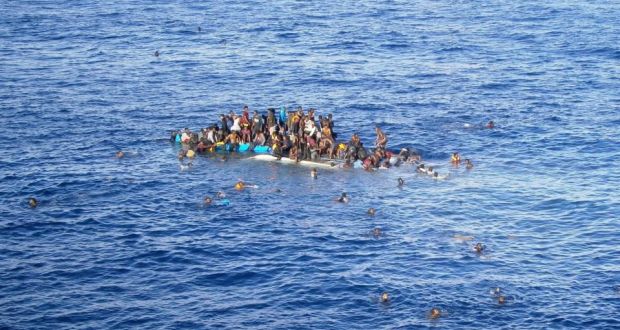Unseen Refugee Crisis
Originally I am from Columbus, Ohio; at the time that I was living there I had no clue that it was one of the largest host cities to Somali refugee populations in the United States. I remember as a teenager recognizing an inundation of Somalis on the North side of town, they seemed to be appearing at a high rate. As youth we were indifferent to their existence, critical of their presence and ignorant to the challenges they were facing. Now almost ten years later, I am finally discovering their story.
As the news is overwhelmed by coverage on the Syrian refugee crisis, there is limited awareness of one of the most complex crises in recent history which has taken place in Somalia. According to the office of the UN High Commissioners for Refugees, Somalis make up the third largest refugee population after Afghans and Syrians. However, not too many people are familiar with this reality. The country has not experienced proper peace for almost 25 years occasionally experiencing times of hope, followed by chaos due to internal conflict among clans.
The history of divergence began in 1991 when Mohamed Siad Barre fled the country. Major General Mohamed Siad Barre led a coup on October 21, 1969 and formed a military dictatorship that divided and oppressed Somalis. After fleeing, the Mogadishu and Somali state collapsed and armed clan-based militias began fighting for power.

Following this, the UN sanctioned a multilateral intervention led by the US, in hopes to resolve the civil war and provide humanitarian aid. However, the endeavor proved to be unsuccessful and the UN departed in 1995; leaving the environment in a state of violence and anarchy. This resulted in 1 million refugees and almost 5 million people at risk of starvation and disease.
Since 1995, the Somali society has existed without a state clan, and family ties provide the main economic support system for individuals. Remittances from the Diaspora have been the primary source of income and three political regions have emerged: Somalia (South/central region), Puntland (northeast region), and Somaliland (northwest region).
The majority of Somalis arrived in the US during the last two decades; with immigration peaking in 2004. It is estimated that 2 million people have fled Somalia since the early 90’s and the vast majority of Somali Diaspora, is a new immigrant who resettled in the US as a refugee beginning in 1992. This explains why as a youth the population increased rapidly and I witnessed more Somali communities in the city.
Somalis are the largest African refugee group in the US and have constituted one of the largest portions of all refugee arrivals during the past several years. The US has one of the largest Somali communities outside of Africa; accounting for 10% of American Muslim communities.
The challenges of high poverty rates, linguistic isolations, pressures to provide economic lifeline to family in Somalia are very limiting to their success. However, on the other hand, Somalis has proven to be resilient in areas of: adapting to new societies, organizing themselves, attaining education opportunities at all levels and exercising their right to vote and practices familiar religious traditions.
The International Committee of the Red Cross works with National societies in Kenya, Somalia, and America; working to provide Restoring Family Links services and Red Cross messages to families who have been separated. These services aim to reestablish lines of communication between families who have been separated due to conflicts or disasters. There have been over 700 tracing and RCM between FY11 and FY15 and the cities in the US with the largest Somali population are: Minneapolis, MN., Columbus, OH., Seattle, Washington., Washington DC, San Diego, CA., San Francisco, CA., and Portland, ME. This information can prove to be valuable if you encounter an individual looking to relocate a family member or send a family member a message. This service is free and available through the American Red Cross National Headquarters or at participating chapters.
I hope that more communities can become aware of the struggles that these individuals have endured; resulting in more empathy. I hope that when we hear the word “refugee” we do not become distant or critical, but curious to hear their stories and to identify possible ways to assist. As we encounter immigrants, migrants, and refugees I hope we aim to put aside stereotypes and do what we can to assist with acclamation. Learning more about the Somali refugee issue has highlighted the value in listening and asking questions first before exercising judgment. The issue is complex, so the only solution that can be offered is encouraging patience in others, so that when we meet these refugees we respond with compassion.
Written by: Kayla Iheukwu, International Services Coordinator II, American Red Cross Greater Cincinnati-Dayton Region
Greater Cincinnati World Affairs Council does not own or claim to own these photos.


